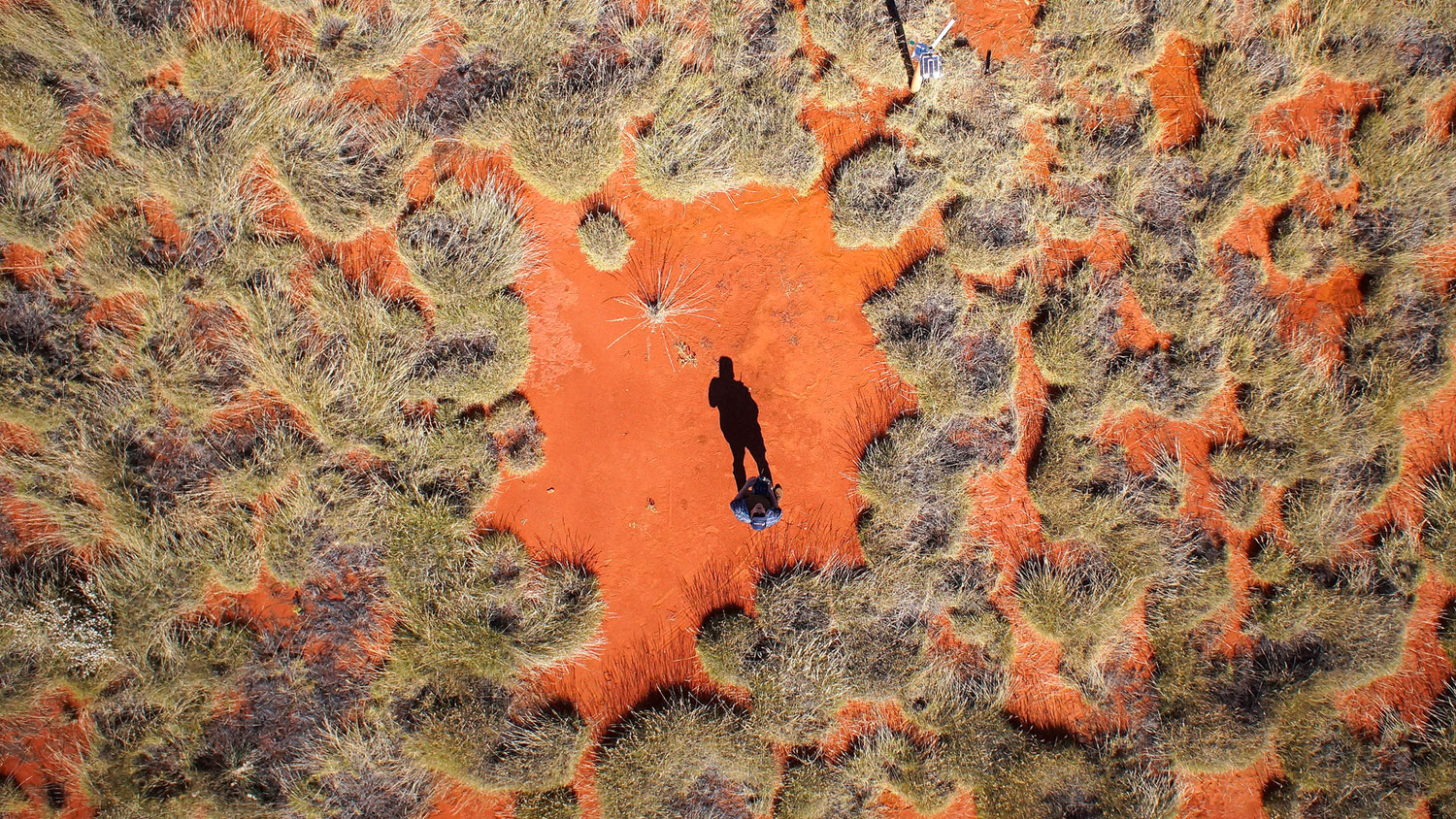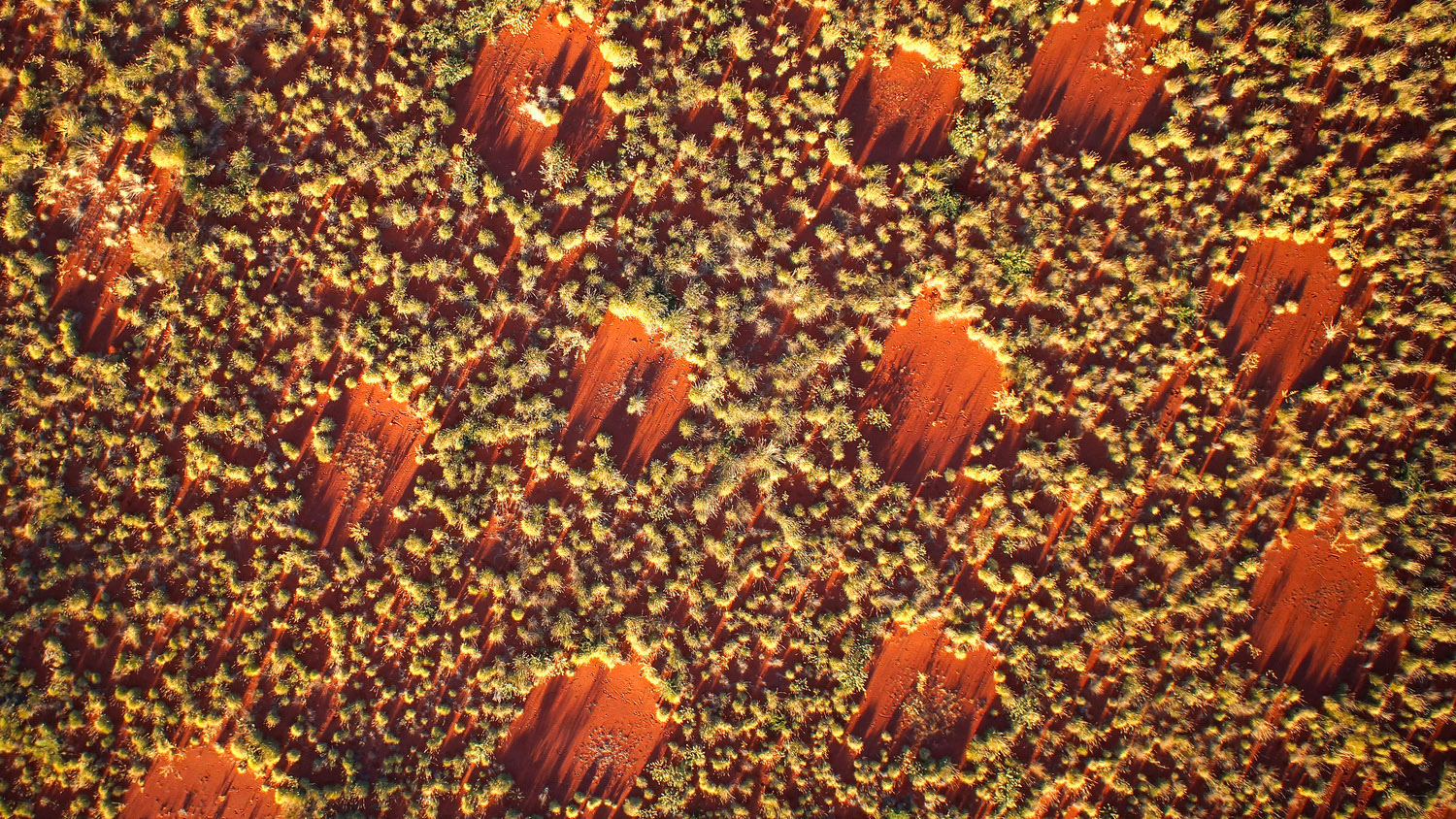It's not magic: Mysterious 'fairy circles' are built by grasses

Fairy circles might finally make sense.
These regular barren patches that pop up in grasslands in Australia and Namibia have long created controversy, with some researchers arguing that they might be the result of underground termite activity. But now, the most detailed monitoring effort ever shows that fairy circles are engineered by the grasses themselves.
The research, published Sept. 21 in the Journal of Ecology, reveals how harsh, dry conditions in Australia, punctuated by occasional heavy rainstorms, create a hostile crust of clay that makes up the barren part of the fairy circles. But water runs off this crust, creating a relative oasis at its edges where grasses can make a home. It's a self-fulfilling cycle: Where there are no plants, weathering from rain and sun makes the soil ever more inhospitable, while areas where grass has managed to grow become a safe haven, where the vegetation cover lowers the soil temperature by up to 77 degrees Fahrenheit (25 degrees Celsius), traps water and allows new seedlings to take root.
Related: In images: Fairy circles of the Namib desert
"This is the positive feedback, where plants do 'self-organized patch formation:' They do ecosystem engineering to benefit as much as possible from the limited water in this harsh environment," study lead author Stephan Getzin, an ecologist at the University of Göttingen and the Helmholtz Centre for Environmental Research in Germany, wrote in an email to Live Science.
Self-organizing patterns
Getzin and his colleagues had previously theorized that fairy circles are an example of what's called a Turing mechanism. This is a type of pattern formation first identified by English mathematician Alan Turing, in which spotted or striped patterns arise naturally from the interaction of two substances.
But to clinch this explanation for the bizarre speckled pattern in arid grasslands, the researchers needed hard evidence. They hauled 175 pounds (80 kilograms) of drone equipment and environmental monitors 745 miles (1,200 kilometers) to Newman, Australia, a remote outpost in Western Australia. They used the drones to get a bird's-eye view of the arrangement of the fairy circles outside of town, where the air temperature can reach 118 F (48 C) in the summer.
Get the world’s most fascinating discoveries delivered straight to your inbox.
They also monitored the fairy circles on a detailed scale, setting up a weather station and soil-monitoring equipment about an inch beneath both barren and vegetated parts of the landscape. The desert outside of Newman is dominated by a single group of grasses in the genus Trioda. This is key to the formation of the fairy-circle patterns, Getzin said, because if there were more grass species around, they would take advantage of different ecological niches and likely cover the barren spots.
The monitoring showed that brief, intense rainfall pounds the coarse sand on the surface into fine silt and clay. The clay acts like a plug between the grains of sand, sealing off the surface. It only takes a couple of hard rains to create this crust, Getzin said. After that, the rainwater runs off rather than penetrating the ground.
Circles of life
However, Getzin said, this runoff also creates the potential for plants to survive in gaps between the barren zones. The remarkably regular, honeycomb-style pattern of 13-foot-diameter (4 meter) fairy circles forms because the plants are availing themselves of as much of this gap space as possible; the barren circles in between end up as far from each other as they can be. The regular, circular structure benefits the plants, too, because each gap's runoff is taken in by the maximum number of plants.
The soil monitoring also showed that the soil under the vegetation is much, much cooler than that in the barren patches. Getzin and his team once measured the top centimeter of the barren crust at 167 F (75 C), well into egg-frying territory. The new study, which measured soil temperatures 2 centimeters down, found that vegetation lowered the soil temperature dramatically in the midafternoon, when temperatures were highest. The cooler soil temperature makes it possible for seeds to germinate and seedlings to grow, Getzin said.
The field monitoring happened to coincide with a wildfire that cleared the desert of grasses, but the same patterns re-emerged when the grasses started again from zero, the researchers found.
"We could show for the first time with many and very detailed field investigations that Turing's theory and all the assumptions in the model/theory are indeed met in nature," Getzin wrote in his email.
Getzin and his team are now doing a similar project in Namibia, where the fairy circles look similar but grow in sandy, rather than clay-rich soil. The different soils mean that the mechanisms for the formation of the circles must be different, Getzin said, but they are still almost certainly forced by the limits on water in the arid environment.
"How else can, in Namibia, perfectly circular grass rings form if it is not the competition of the grasses?" Getzin said.
Originally published on Live Science.

Stephanie Pappas is a contributing writer for Live Science, covering topics ranging from geoscience to archaeology to the human brain and behavior. She was previously a senior writer for Live Science but is now a freelancer based in Denver, Colorado, and regularly contributes to Scientific American and The Monitor, the monthly magazine of the American Psychological Association. Stephanie received a bachelor's degree in psychology from the University of South Carolina and a graduate certificate in science communication from the University of California, Santa Cruz.




